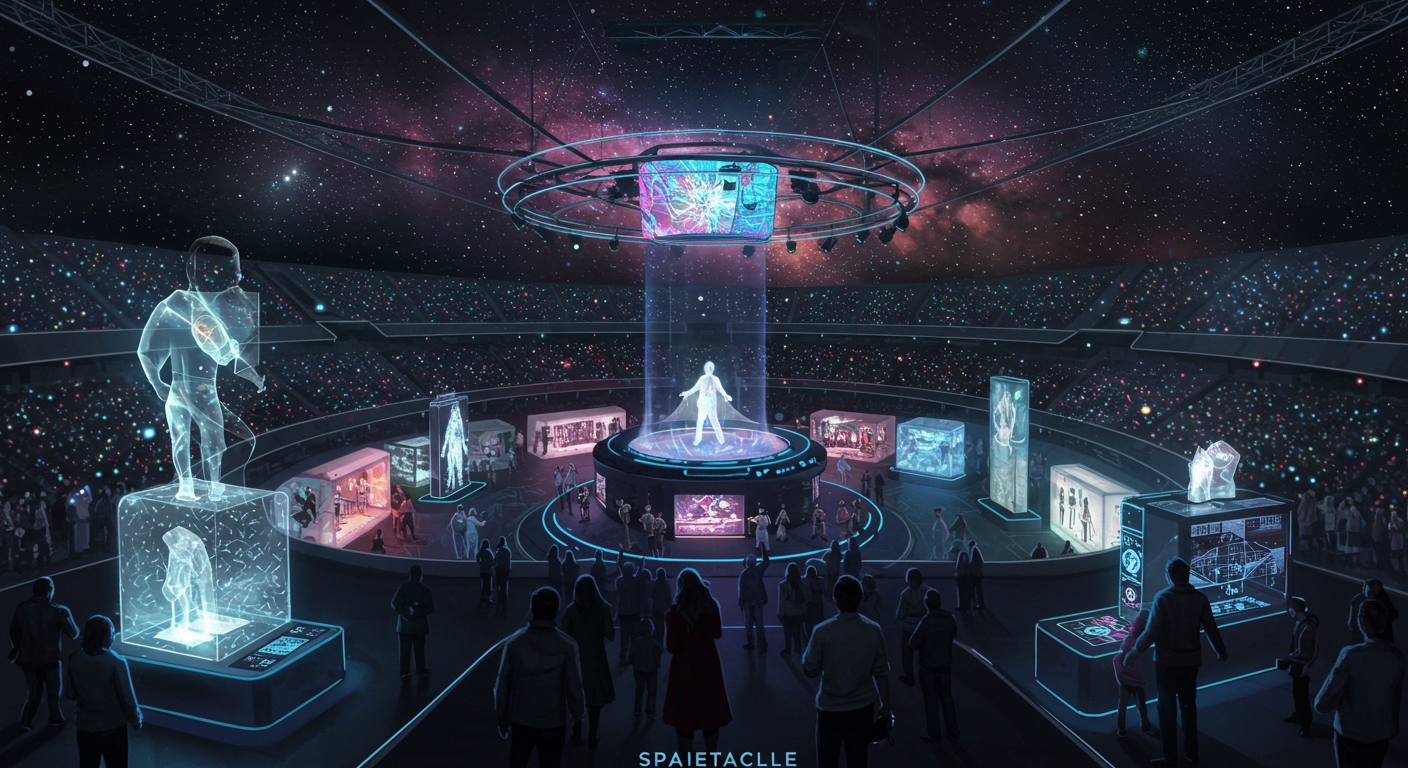Imagine stepping into a world where reality blurs seamlessly with extraordinary experiences. Welcome to the era of Spaietacle, a thrilling new concept that redefines how we engage with performances and environments. As technology evolves, so do our expectations for entertainment and interaction. No longer confined to traditional theatre or static exhibitions, audiences now crave immersive spaces that captivate all their senses.
Spaietacle is more than just a spectacle; it’s an invitation to explore realms where imagination takes flight. This innovative approach combines art, technology, and storytelling in ways we’ve never seen before. Join us as we delve into the evolution of spectacle from its theatrical roots to the digital landscapes of today, exploring what makes Spaietacle not only relevant but essential for future experiences in entertainment and beyond.
The Evolution of Spectacle: From Theatre to Virtual Reality
The concept of spectacle has undergone a remarkable transformation over the centuries. Theatre, with its live performances and emotive storytelling, was once the pinnacle of entertainment. It drew audiences into shared experiences, igniting emotions through compelling narratives.
As technology progressed, cinema emerged as a new form of spectacle. The magic of moving images captivated viewers in ways that theatre could not replicate. Cinematic techniques allowed for grand stories to unfold on screens worldwide.
Fast forward to today’s digital age, where virtual reality is reshaping our understanding of immersive experiences. This technology transports users into 3D environments—allowing them to interact with art and narrative like never before.
Spectacle has evolved from passive observation to active participation. Audiences are no longer mere spectators; they become integral parts of the story itself through innovative platforms and captivating designs.
The Rise of Immersive Spaces and Experiences
Immersive spaces are redefining how we engage with art, entertainment, and even education. With advancements in technology, experiences have evolved from passive observation to active participation.
These environments allow individuals to step inside stories rather than just watch them unfold. The line between the audience and the performance blurs dramatically.
Virtual reality has spearheaded this movement, transporting users into new worlds where they can interact with their surroundings. Augmented reality adds another layer by enhancing what we see with digital overlays.
Escape rooms and interactive exhibitions thrive on this trend, inviting people to become part of the narrative. Each visit feels unique as participants shape their own experience through decision-making.
As these immersive spaces continue to grow in popularity, they challenge traditional formats of telling stories and sharing knowledge. The future promises even more innovative creations that will captivate our senses like never before.
The Benefits and Drawbacks of Spaietacle
Spaietacle offers a captivating blend of reality and imagination. It immerses participants in environments that challenge their perceptions. This can lead to unforgettable experiences, sparking creativity and inspiring new ideas.
However, the allure of Spaietacle has its downsides. The technology required can be expensive and complex. Not everyone has access to these advanced setups, limiting participation.
Moreover, while immersion is thrilling, it may also blur the line between real life and fabricated worlds. Individuals might struggle with distinguishing between genuine emotions and those engineered for entertainment.
There is an environmental impact to consider. Large-scale installations often require significant resources for production and maintenance. Balancing innovation with sustainability remains a crucial challenge as Spaietacle evolves.
Examples of Successful Spaietacles
One standout example of a successful Spaietacle is “Sleep No More” in New York City. This immersive theater experience invites audiences to explore a hauntingly reimagined hotel while unraveling the story of Macbeth. Each guest wanders freely, creating their own unique narrative.
Another impressive instance is “The Museum of Ice Cream.” Here, visitors engage with art installations that stimulate all five senses. From the sprinkle pool to interactive exhibits, this concept transforms an ordinary museum visit into a delightful journey.
In Los Angeles, “The Haunt” offers an exhilarating blend of horror and immersive storytelling. Participants navigate through chilling environments where they witness eerie performances and become part of spine-tingling tales.
These examples showcase how Spaietacles transform traditional entertainment mediums into engaging experiences that linger long after the curtain falls or lights dim. They break boundaries, inviting participation and personal connection like never before.
The Future of Spaietacle in Entertainment and Beyond
The future of Spaietacle is undeniably exciting. As technology advances, so do the possibilities for immersive experiences in entertainment. Imagine a concert where holograms interact with live performances, creating an unforgettable blend of reality and fantasy.
Beyond traditional media, Spaietacles will find their place in education and training. Virtual environments can simulate real-world scenarios, enhancing learning through engagement. Students could explore historical events or scientific concepts firsthand.
Art installations will also evolve into dynamic spaces that respond to audience interaction, transforming how we perceive creativity.
Even corporate environments may embrace Spaietacle as a tool for team-building exercises or product launches that captivate stakeholders like never before.
As these immersive experiences become more mainstream, societies might shift towards valuing emotional connections over mere consumption. The boundaries between virtual and physical worlds are poised to blur even further, leading us into uncharted territories of perception and experience.
Conclusion: Embracing the Blurring Lines Between Reality and Spectacle
As the concept of Spaietacle continues to evolve, it paves the way for a future where our experiences are more interconnected than ever before. The blend of physical and digital realms creates new opportunities for storytelling and engagement. Audiences can now participate in narratives like never before, immersing themselves in unique worlds that challenge their perceptions.
This merging of reality and spectacle offers countless possibilities across various fields—entertainment, education, marketing, and beyond. As technology advances, so too will the potential for immersive experiences that captivate audiences on multiple levels.
Embracing this shift means acknowledging not just what is possible but also how these innovations shape human connection. The lines between what we perceive as real and what exists as part of an orchestrated spectacle grow increasingly blurred. In this landscape rich with creativity and collaboration, embracing Spaietacle promises enriching interactions that redefine our understanding of both reality and imagination.

